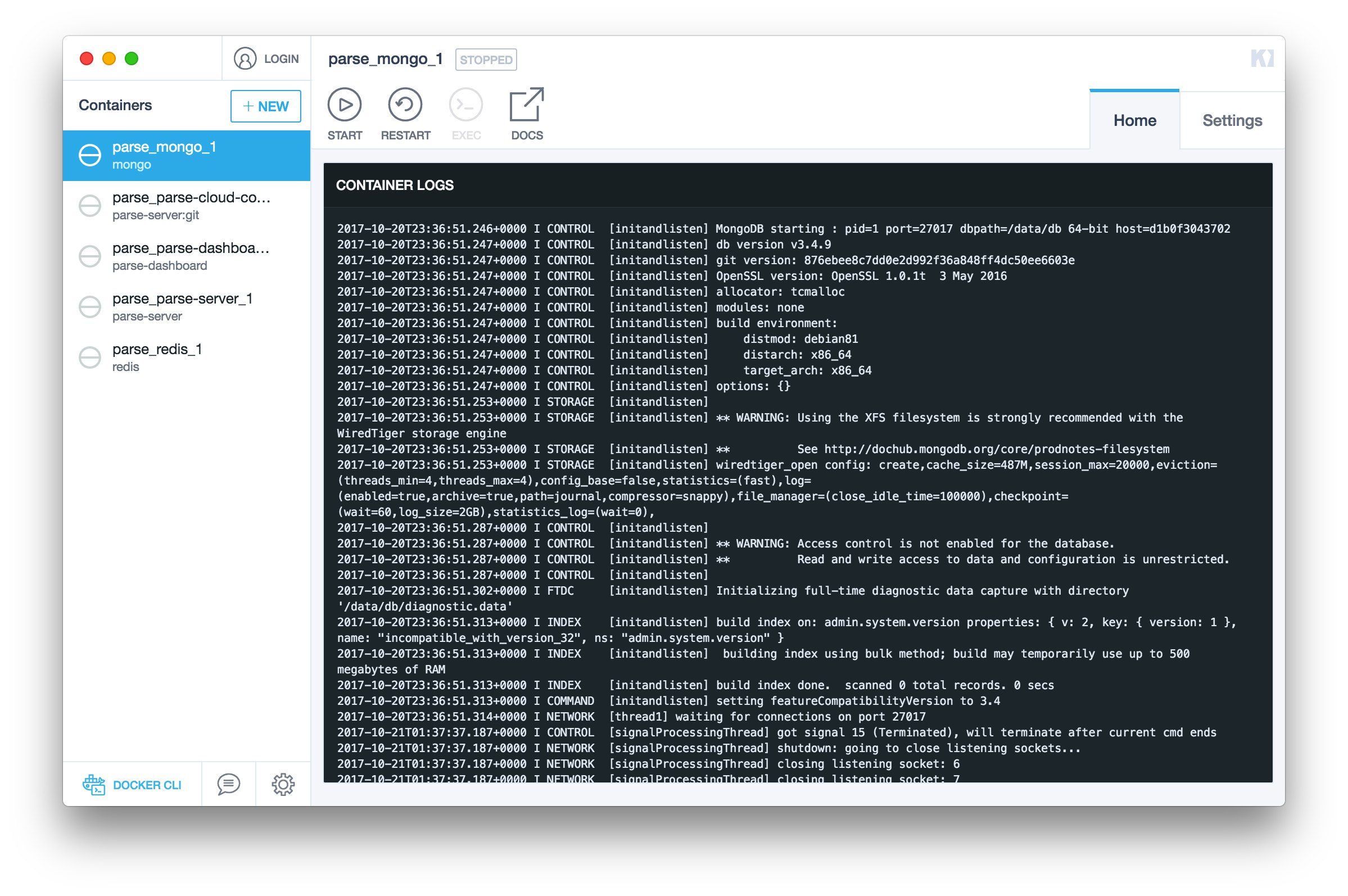A quick comparative review of Docker GUI solutions
There are a huge number of tools for working with Docker, as well as articles with sets of solutions. However, in the vast expanses of the Internet, it was not enough to meet with brief overview articles, based on which one could understand what tool I need for a specific task. This article is only a reflection of what happened to face and work personally, so the list includes the most frequently used and popular tools.
So, let's begin:
DockStation is a powerful functional combine for working with Docker. The main advantage is the focus on project development for Docker and work with Docker Compose.
Website: dockstation.io
')
Benefits: Work with Docker Compose. Native support for Compose configurations, resulting in full support for all the features of Docker functionality. Very rich functionality in the form of opportunities to work on Docker projects in general, working with remote nodes, monitoring resources and much, much more. Very fast and friendly support.
Disadvantages: Closed source code.

Portainer is a powerful solution for working and configuring Docker containers. It is a Web application that allows you to configure and manipulate containers. In contrast, Kitematic and Shipyard has a very rich functionality that allows for very high-quality and full configuration.
Website: portainer.io
Benefits: OpenSource. Rich functionality that allows you to fully configure the project, and manage the containers of this project. Allows you to connect to remote nodes and view container statistics.
Disadvantages: Unreasoned and overloaded UI. Working in the web version for many can be inconvenient. It is inconvenient if the work occurs with more than 1 project.

Kitematic - the official app of Docker. Kitematic is an OpenSource solution that was purchased by Docker in 2015. The main purpose and application is to manage and configure individual containers.
Website: kitematic.com
Benefits: OpenSource. The official app.
Disadvantages: The application is very limited in features. Very weak Docker functionality coverage. It is inconvenient if the work occurs with more than 1 project.

Shipyard is a solution for working with Docker containers. It is a Web application that allows configuration and basic manipulations with Docker containers.
Website: shipyard-project.com
Benefits: OpenSource. Easy to use.
Disadvantages: As well as Kitematic has limited functionality. Working in the web version for many can be inconvenient. It is inconvenient if the work occurs with more than 1 project.

Table of functions that you probably will use:
Findings:
Each tool has its pros and cons. Approach to the choice of tool is necessary from the task. If you have only one project in work and on the local machine, you do not need functionality more than to start, stop, reload the container, view its logs or configure something primitive, then Kitematic will be a good solution. If there are the same conditions, but you need to do this on a remote machine, then Shipyard is quite suitable for this.
If you have more serious projects, then you can stop at 2 DockStation and Portainer solutions . In terms of their functionality, these solutions are very powerful. If you don’t like to bother with application deployment, if you use Docker Compose on your projects or are going to switch to Docker Compose, if you are working with more than 1 project on Docker, if you need to monitor the status and resource consumption of both individual containers and projects in general, then definitely a more suitable solution would be DockStation . In case the work is done on one project and you need a web panel and the ability to configure individual containers, Portainer will be a good choice.
UPD:
I wanted to make a note that all these tools involve problems in interacting with Docker. If you are DevOps and you have the task of deploying, deploying, scaling, etc., then the solutions described above are unlikely to be able to help you with something. But surely Rancher can help you.
So, let's begin:
DockStation is a powerful functional combine for working with Docker. The main advantage is the focus on project development for Docker and work with Docker Compose.
Website: dockstation.io
')
Benefits: Work with Docker Compose. Native support for Compose configurations, resulting in full support for all the features of Docker functionality. Very rich functionality in the form of opportunities to work on Docker projects in general, working with remote nodes, monitoring resources and much, much more. Very fast and friendly support.
Disadvantages: Closed source code.

Portainer is a powerful solution for working and configuring Docker containers. It is a Web application that allows you to configure and manipulate containers. In contrast, Kitematic and Shipyard has a very rich functionality that allows for very high-quality and full configuration.
Website: portainer.io
Benefits: OpenSource. Rich functionality that allows you to fully configure the project, and manage the containers of this project. Allows you to connect to remote nodes and view container statistics.
Disadvantages: Unreasoned and overloaded UI. Working in the web version for many can be inconvenient. It is inconvenient if the work occurs with more than 1 project.

Kitematic - the official app of Docker. Kitematic is an OpenSource solution that was purchased by Docker in 2015. The main purpose and application is to manage and configure individual containers.
Website: kitematic.com
Benefits: OpenSource. The official app.
Disadvantages: The application is very limited in features. Very weak Docker functionality coverage. It is inconvenient if the work occurs with more than 1 project.

Shipyard is a solution for working with Docker containers. It is a Web application that allows configuration and basic manipulations with Docker containers.
Website: shipyard-project.com
Benefits: OpenSource. Easy to use.
Disadvantages: As well as Kitematic has limited functionality. Working in the web version for many can be inconvenient. It is inconvenient if the work occurs with more than 1 project.

Table of functions that you probably will use:
| Dockstate | Kitematic | Portainer | Shipyard | |
|---|---|---|---|---|
| Work with Docker Compose | + | - | - | - |
| Work with Docker Machine | + | + | + | + |
| Configuring individual containers | - | + | + | + |
| Basic container manipulations (start, stop, restart, ...) | + | + | + | + |
| Display container logs | + | + | + | + |
| Search by logs | + | - | - | - |
| Container grouping and searching | + | - | - | - |
| Monitoring Resource Consumption | + | - | + | + |
| Work with remote nodes | + | - | + | - |
| Application Templates | - | - | + | - |
| Work with custom hubs | - | - | + | - |
Findings:
Each tool has its pros and cons. Approach to the choice of tool is necessary from the task. If you have only one project in work and on the local machine, you do not need functionality more than to start, stop, reload the container, view its logs or configure something primitive, then Kitematic will be a good solution. If there are the same conditions, but you need to do this on a remote machine, then Shipyard is quite suitable for this.
If you have more serious projects, then you can stop at 2 DockStation and Portainer solutions . In terms of their functionality, these solutions are very powerful. If you don’t like to bother with application deployment, if you use Docker Compose on your projects or are going to switch to Docker Compose, if you are working with more than 1 project on Docker, if you need to monitor the status and resource consumption of both individual containers and projects in general, then definitely a more suitable solution would be DockStation . In case the work is done on one project and you need a web panel and the ability to configure individual containers, Portainer will be a good choice.
UPD:
At the time of writing, an unpleasant event occurred. Shipyard project is officially dead .
Source: https://habr.com/ru/post/341886/
All Articles